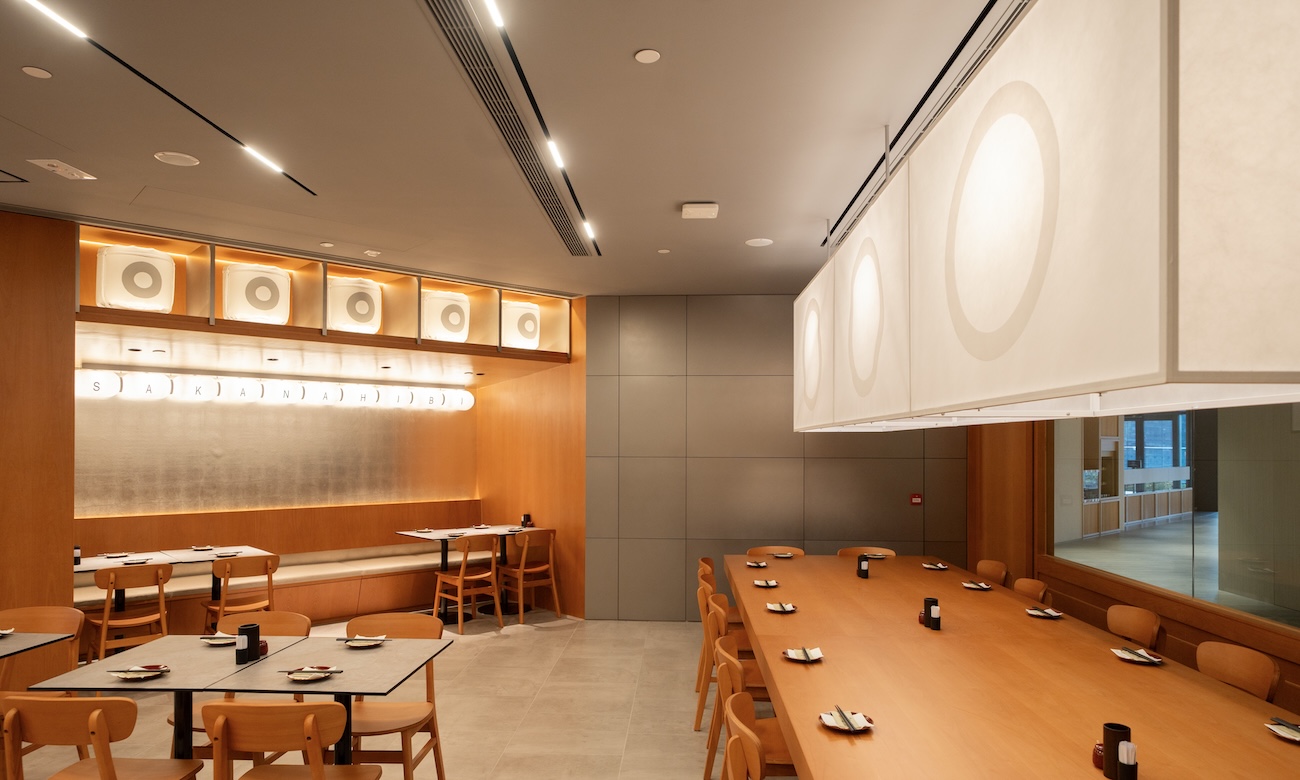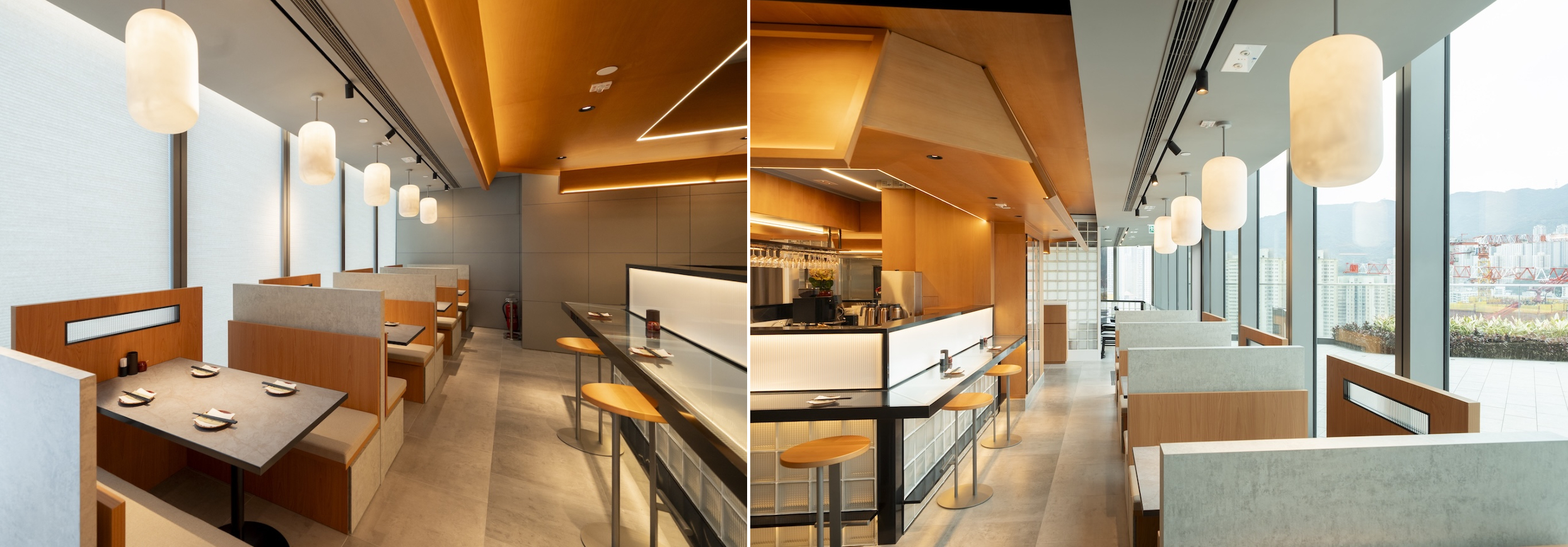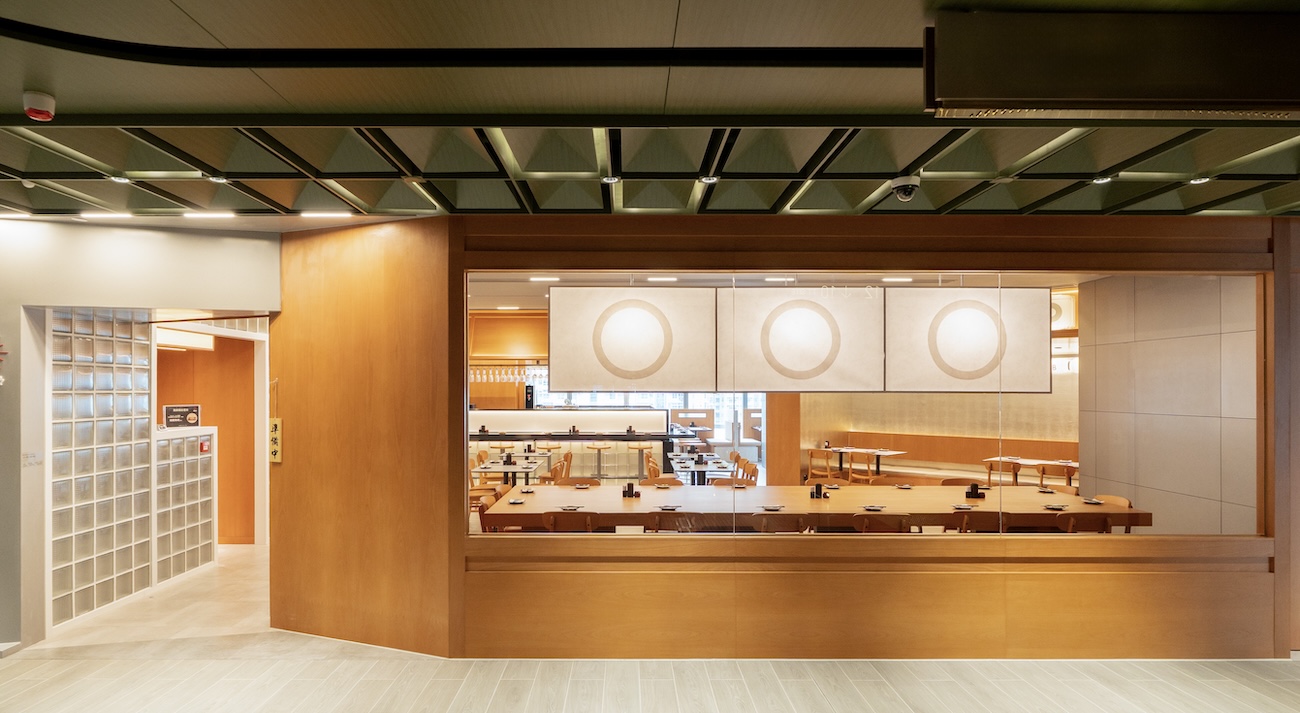
A playful modern take on a traditional Japanese design
A reimagined Japanese izakaya restaurant that cleverly blends elements of Tokyo’s traditional street stalls with sophisticated modern design is one of the latest new eateries springing up in Hong Kong’s Kai Tak district, thanks to the creative smarts of 4N Design.
Occupying a generous 3,000-sq feet in The Twin Tower, Sakana Hibi redefines communal dining through a meticulously layered design.
Lead designer Sinner Sin says the studio dissected the essence of izakaya—from their postwar utilitarian roots to today’s vibrant social hubs—to craft a space that feels both timeless and fresh.
“By blending the grit of Tokyo’s alleyway stalls with the sophistication of modern craftsmanship, the space celebrates izakaya culture’s evolution—a place where generations connect over shared plates and spirited conversation,” he says.
Rather than opting for a literal interpretation, Sin says his team chose to weave symbolic gestures into every detail, such as the stainless-steel countertops, often found in traditional “yatai” or street stalls, and the restored timber sake casks, wrapped in white fabric, their patina contrasting with the sleek surfaces.
Sin also highlights the six-meter long, light-wood communal table, sanded to a soft sheen, inviting conviviality. Above it, three oversized rectangular lanterns—their circular cutouts casting dappled light—echo the geometry of traditional chōchin Lantern, scaled dramatically to modern proportions. Glass block walls diffuse golden kitchen glows, evoking the nostalgic haze of 1960s shot bars.
In a quiet corner area, sunken bunker seating helps creates a cozy enclave for more intimate gatherings. Blackened steel tables, black chairs and matte surfaces amplify the cocoon-like serenity.

Glass block walls diffuse golden kitchen glows, evoking the nostalgic haze of 1960s shot bars.
“Sakana Hibi doesn’t mimic any old izakayas— our design team reinvented to create a brand new one,” says Sin.
“The stainless steel will scratch, the wood will darken, and that’s the point. It’s a living space where every mark tells a story, just like the best hole-in-the-wall spots in Tokyo or Osaka.”
